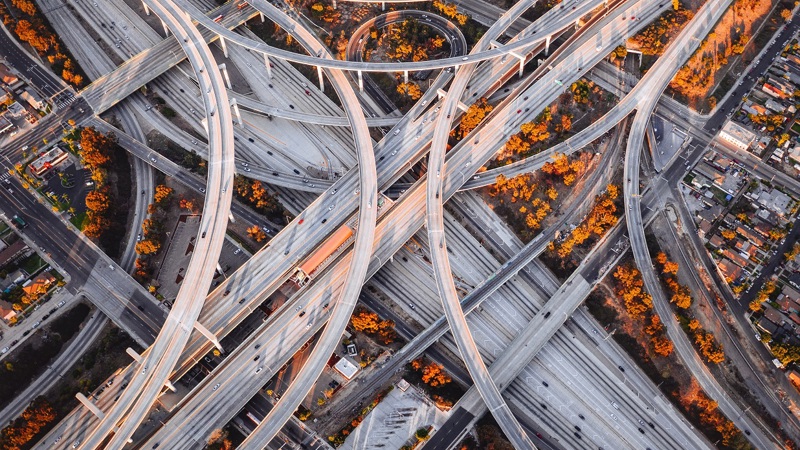
Transport is one of the largest emitters of greenhouse gases.
In 2019, transport (excluding international aviation and shipping) accounted for 122MtCO2e - equivalent to 27% of the UK’s overall greenhouse gas emissions. If international aviation and shipping are included, this increases transport emissions by a further 45MtCO2e. The story is similar in other countries: domestic transport accounted for 22% of all EU-27 emissions in 2020, and the figures for France (28%) and Germany (20%) are similar. Across Europe, transport is a major source of greenhouse gas emissions.
Reflecting this importance, there are a wide range of policy initiatives aiming to reduce the level of carbon emissions from the transport sector: the European Green Deal, reform to the EU Emissions Trading Scheme, the creation of a new “shadow” EU emissions trading scheme including fuel for road transport, the UK government’s Transport Decarbonisation Plan and Jet Zero initiative are just a few.
However, transport is also a hugely diverse part of the economy and is relied on by a significant number of people every day. Initiatives to change the transport networks we all rely on (and the way we use those networks) are therefore highly visible to the general population making change (and any costs associated with that change) in this area very salient.
With COP27 around the corner, now is a good time to reflect on some of the key economic issues involved in decarbonising this complex set of networks: the challenge of innovation; the need for co-ordination; and the extent of behavioural change.
In some areas of transport, there has already been substantial innovation and development: for example, changes are occurring in the automotive markets with electric car registrations now representing 11% of newly registered passenger cars in the EE-27, Iceland, Norway and the UK. However, the blend of technology to power different types of vehicles remains very unclear with debates about the relative prices of inputs leading to differences in the costs of alternative technologies; and for many types of vehicles (particularly trucks, construction vehicles and planes) a viable technology which is not based on ICEs is not yet in large scale deployment. Continued innovation into both new forms of traction (such as hydrogen) and how to reduce the environmental impact of existing ICEs (for example through the use of synthetic fuels) will be needed.
Transport networks have many different stakeholders, including the owners/operators of the infrastructure, the users of that infrastructure, consumers (who may use the infrastructure directly – for example the road network; or indirectly – for example as passengers in planes), investors in that infrastructure or the vehicles using that infrastructure, and governments/regulators. To change infrastructure from its current structure (or creating new structures) to provide the basis for new – lower carbon – forms of travel will require co-ordination across these different players. There is therefore an important role for clear government policy, backed by directions to regulators (both safety and economic) to set the direction of travel, ensure the appropriate availability of transport infrastructure while avoiding duplication of that infrastructure, and give firms confidence to invest and innovate. This is particularly challenging when the form of technology is not known clearly in advance, but governments can still help by being clear about the outcomes that they expect to see, and how they plan to support those, in a technology-neutral way: such an approach has been common practice in other sectors, such as telecoms, for many years.
Finally, with transport infrastructure being used by hundreds of millions of people across Europe, one of the other major challenges is how those people will behave in using those transport networks of the future. For example, the extent to which journeys are made by road, rail or other modes (particularly walking and cycling) will have a substantial impact on both the level of greenhouse gas emissions from transport networks for the foreseeable future (on the basis that it will be many years before all of the ICE-based vehicles are phased out) and on the other environmental and social impacts of those transport networks. All stakeholders will need to embrace behavioural economics and science to understand and influence how passengers use their networks, for example by making the carbon cost of different ways of making a trip more “salient” to passengers i.e. easier to access and to understand before those passengers choose how to make a particular journey so that this can inform journey choices.
In conclusion, decarbonising transport networks is a necessary step to a world with much lower greenhouse gas emissions but it will be a major challenge as it relies on co-ordination across many different players and a degree of behavioural change from millions of individuals. As the technology needed to decarbonise all of transport has not yet been developed, government input will need to be nimble in focusing on the outcomes (rather than the technologies) desired and how the government can support in overcoming market failures. This support will need to evolve as technology rapidly develops in ways which are currently difficult to foresee.





